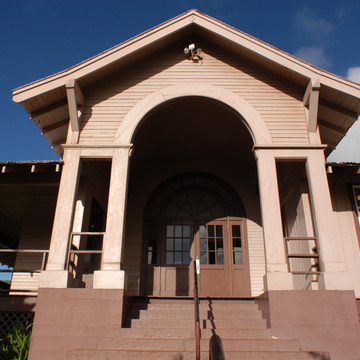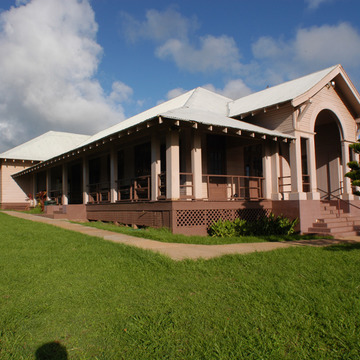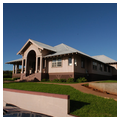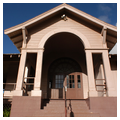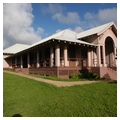You are here
Molokai Baptist Church (Church of Jesus Christ of Latter-Day Saints [LDS])
This early example of a Hawaiian-style church blends classical elements with such regional vocabulary as the double-pitched hipped roof and wraparound lanai. Sited on a promontory, the church features a round-arched portico and fanlight-topped entrance. Clapboard siding and figure-four brackets, reminiscent of bungalow and Arts and Crafts traditions, complement the Hawaiian style. Double doorways along both sides of the lanai provide indoor-outdoor access as well as cross ventilation.
In 1936, approximately 66 percent of Hoolehua's population was Mormon, a result of the church's encouragement of its members to homestead. The LDS congregation abandoned this building in the 1960s, when it relocated to a more modern edifice in Kalamaula. In recent years, the Baptist church enclosed one side of the wraparound lanai to obtain more office space.
Writing Credits
If SAH Archipedia has been useful to you, please consider supporting it.
SAH Archipedia tells the story of the United States through its buildings, landscapes, and cities. This freely available resource empowers the public with authoritative knowledge that deepens their understanding and appreciation of the built environment. But the Society of Architectural Historians, which created SAH Archipedia with University of Virginia Press, needs your support to maintain the high-caliber research, writing, photography, cartography, editing, design, and programming that make SAH Archipedia a trusted online resource available to all who value the history of place, heritage tourism, and learning.



